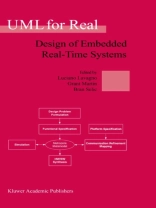The complexity of most real-time and embedded systems often exceeds that of other types of systems since, in addition to the usual spectrum of problems inherent in software, they need to deal with the complexities of the physical world. That world-as the proverbial Mr. Murphy tells us-is an unpredictable and often unfriendly place. Consequently, there is a very strong motivation to investigate and apply advanced design methods and technologies that could simplify and improve the reliability of real-time software design and implementation. As a result, from the first versions of UML issued in the mid 1990’s, designers of embedded and real-time systems have taken to UML with vigour and enthusiasm. However, the dream of a complete, model-driven design flow from specification through automated, optimised code generation, has been difficult to realise without some key improvements in UML semantics and syntax, specifically targeted to the real-time systems problem. With the enhancements in UML that have been proposed and are near standardisation with UML 2. 0, many of these improvements have been made. In the Spring of 2003, adoption of a formalised UML 2. 0 specification by the members of the Object Management Group (OMG) seems very close. It is therefore very appropriate to review the status of UML as a set of notations for embedded real-time systems – both the state of the art and best practices achieved up to this time with UML of previous generations – and where the changes embodied in the 2.
ภาษา อังกฤษ ● รูป PDF ● ISBN 9780306487385 ● บรรณาธิการ Luciano Lavagno & Grant Martin ● สำนักพิมพ์ Springer US ● การตีพิมพ์ 2007 ● ที่สามารถดาวน์โหลดได้ 3 ครั้ง ● เงินตรา EUR ● ID 4719927 ● ป้องกันการคัดลอก Adobe DRM
ต้องใช้เครื่องอ่านหนังสืออิเล็กทรอนิกส์ที่มีความสามารถ DRM










